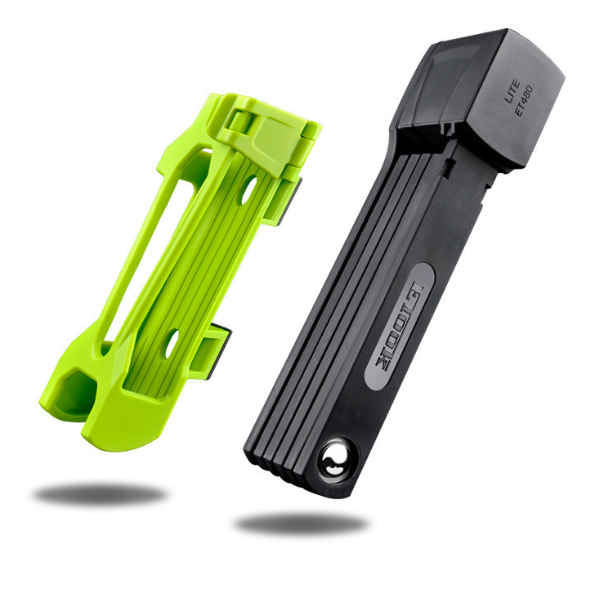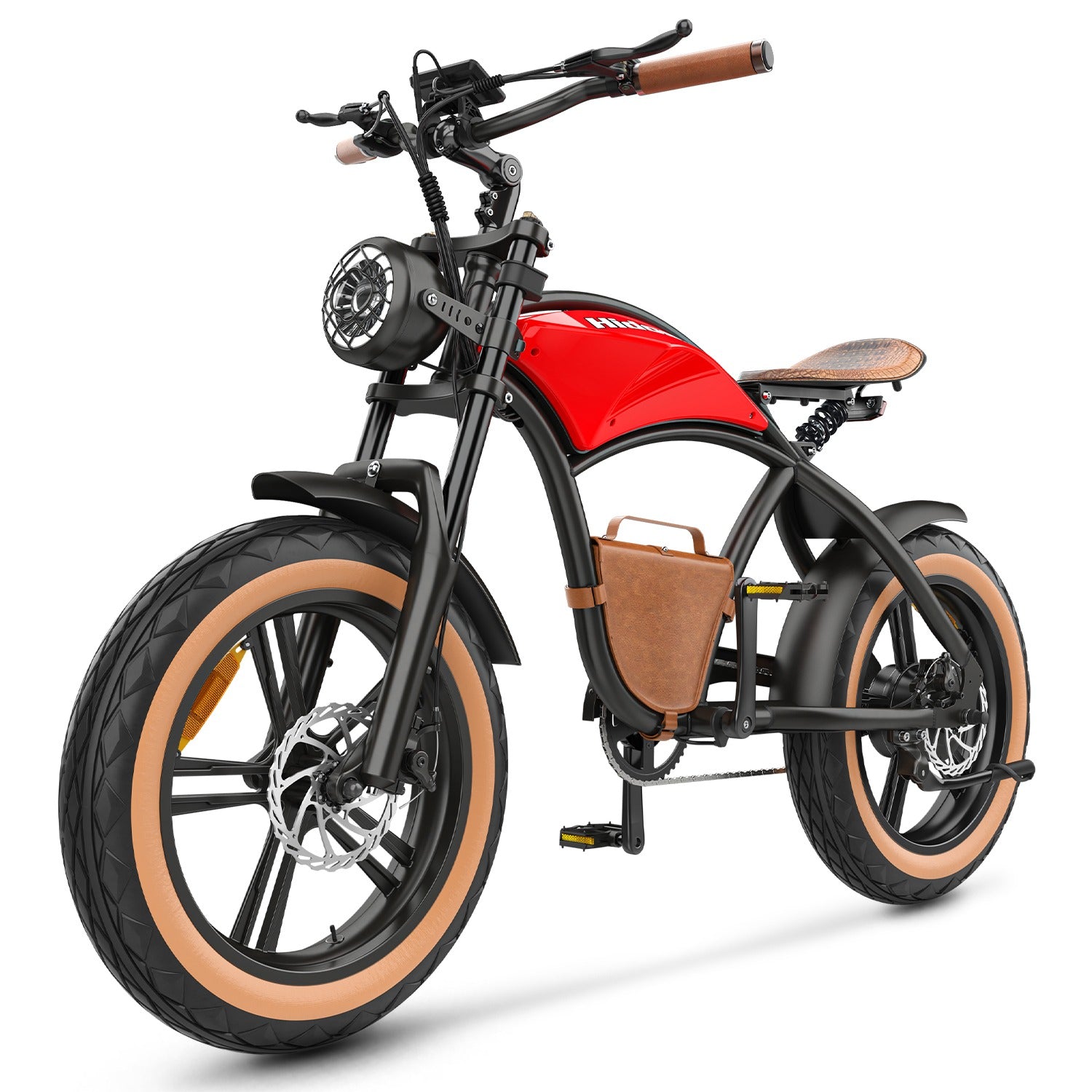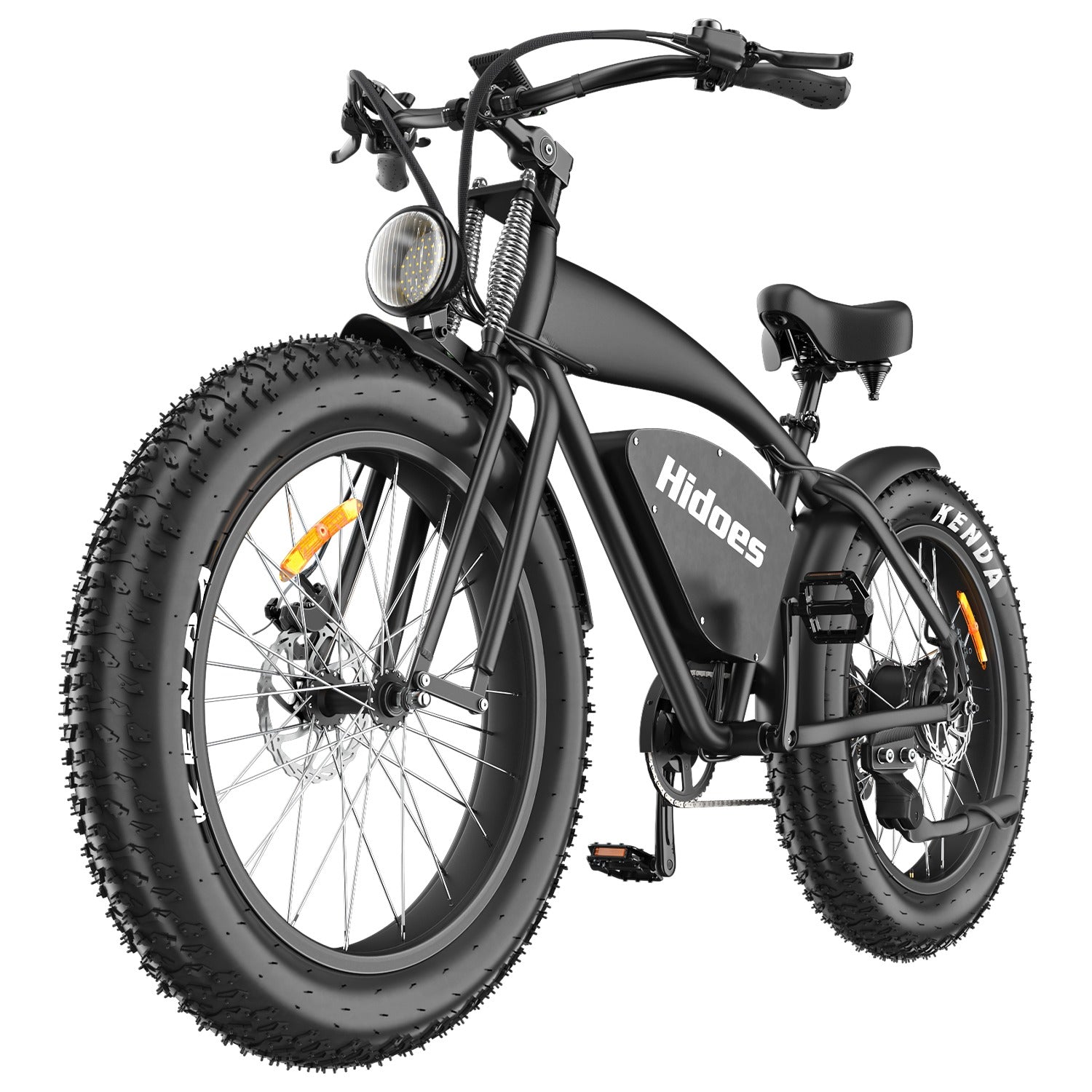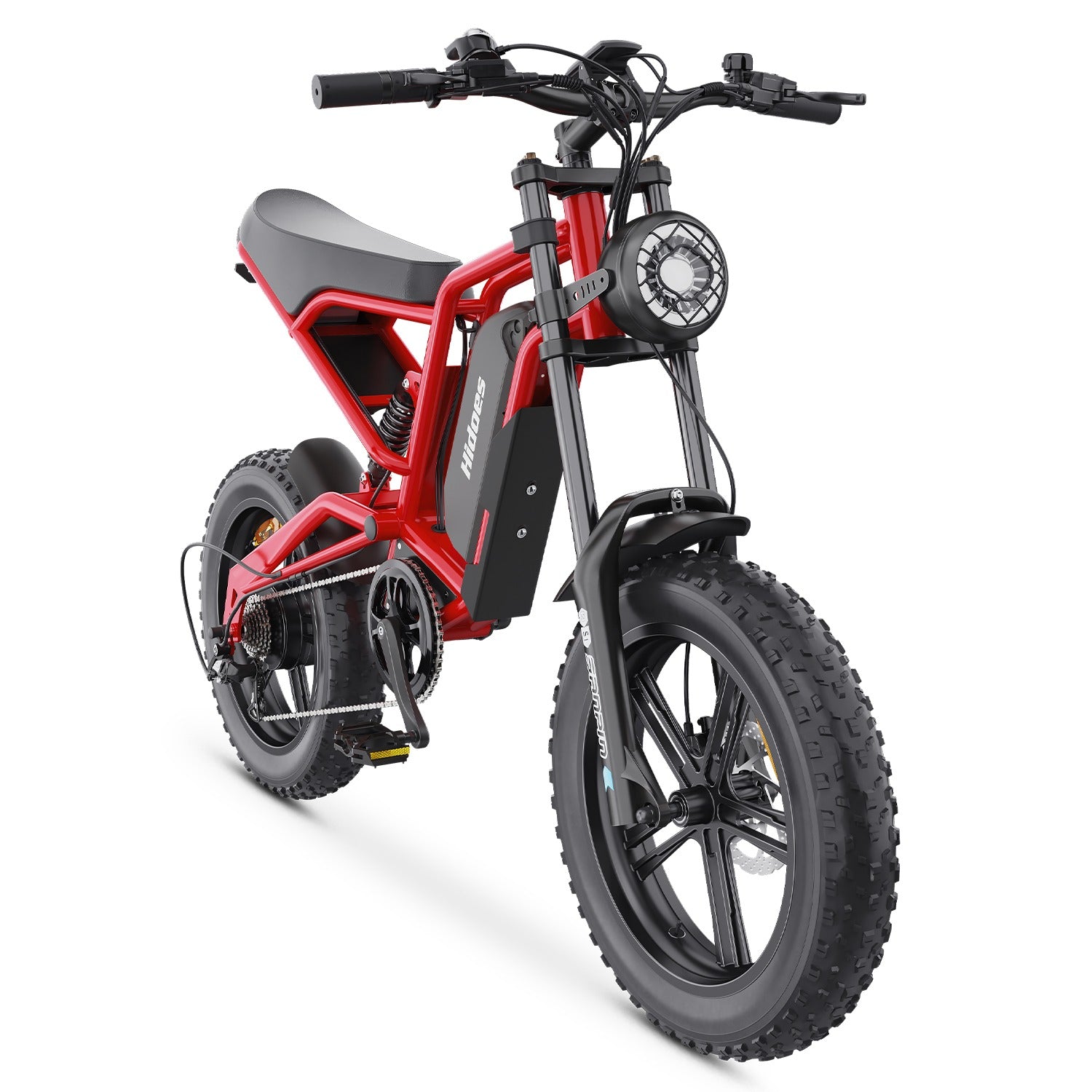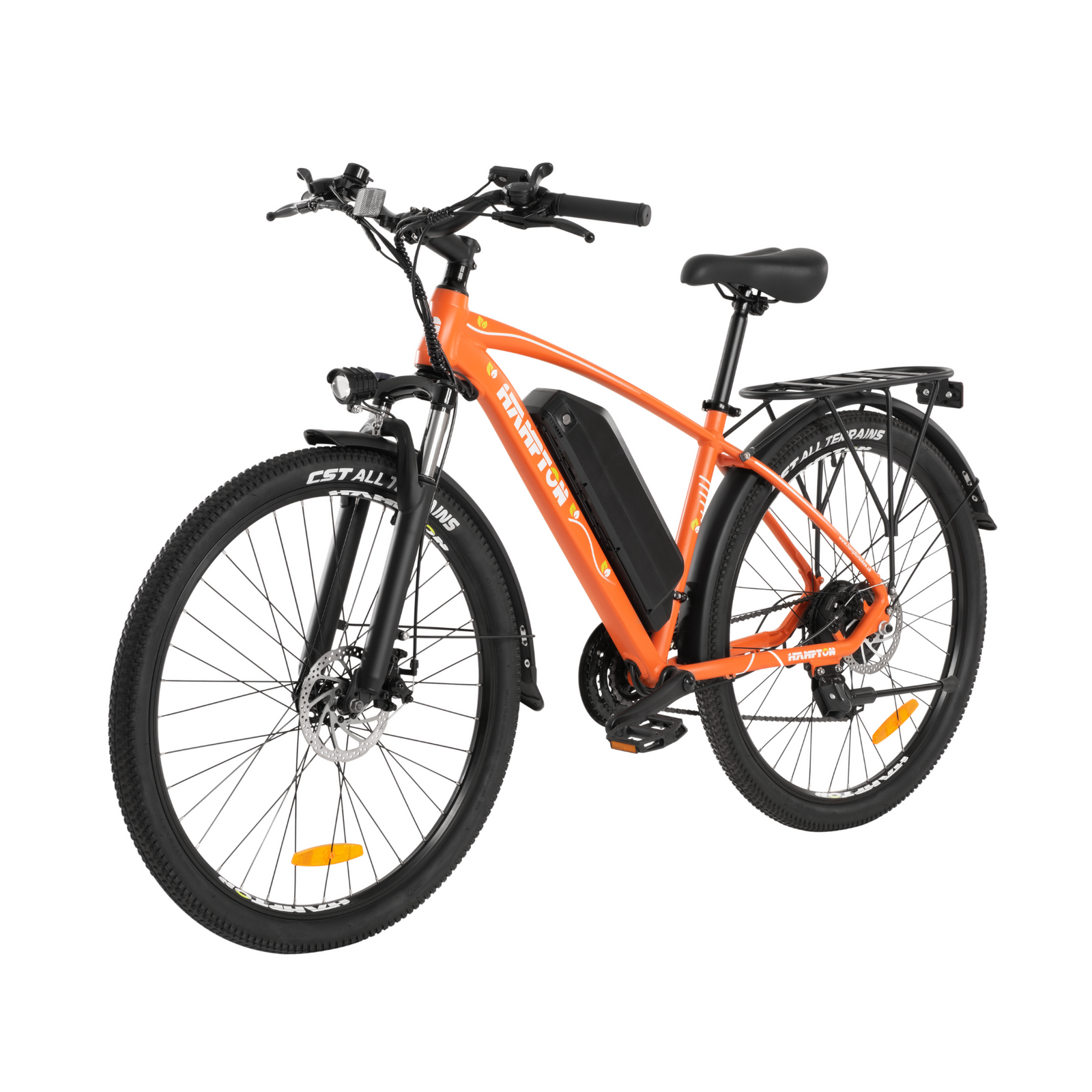Electric bikes (e-bikes) are revolutionising how people travel, especially in the UK. They combine the health benefits of traditional cycling with the convenience of electric assistance, making them a popular choice for commuters, leisure riders, and adventurers alike. Yet, with so many options on the market, finding the right e-bike can be a challenge. In this guide, we’ll walk you through everything you need to know—from UK regulations to motor types and sizing—so you can choose the perfect e-bike for your needs.
Understanding Electric Bikes
E-bikes, called “electrically assisted pedal cycles” (EAPCs), combine a rechargeable battery and an electric motor to assist your pedalling. The level of assistance is adjustable, giving you extra power for hills or longer rides.
E-Bike Types
- City Bikes: Designed for urban use, often featuring upright riding positions, integrated lights, and mudguards.
- Mountain Bikes (MTB): Built with rugged frames and suspension for off-road and trail adventures.
- Folding Bikes are ideal for those with limited storage space or who use multiple forms of transport (train, car, etc.).
- Cargo Bikes: Feature extended frames or built-in storage solutions for carrying children, groceries, or heavier items.
Benefits of E-Bikes
- Health & Fitness: You choose how much assistance you want—pedal more for exercise or let the motor do more work when you’re tired.
- Eco-Friendly Transport: E-bikes produce zero tailpipe emissions, helping reduce congestion and pollution in urban areas.
- Accessibility: Great for riders of varying ages or physical abilities, enabling more people to enjoy cycling.
UK E-Bike Regulations
In the UK, e-bikes (EAPCs) are road-legal without tax or insurance, provided they meet these conditions:
- Maximum power output of 250W.
- Electric assistance cuts out at 15.5 mph (25 km/h).
- You must be at least 14 years old to ride one.
If an e-bike exceeds these limitations, it may be classified as a moped or motorcycle, requiring a licence, registration, and insurance. Always check if your chosen e-bike meets EAPC requirements before purchase.
Motor and Power Systems
The heart of an e-bike is its motor and battery setup. Understanding these components will help you find an e-bike that performs well for your riding style and typical terrain.
Types of Motors
- Hub Motors are located in the wheel hub (front or rear). They are more straightforward and low-maintenance but can lack torque on steep hills.
- Mid-Drive Motors: Positioned near the pedals, directly powering the chain. Offer better torque and weight distribution, ideal for off-road or hilly areas.
Power Delivery
- Pedal Assist (Pedelec): The motor kicks in only when you pedal. This is the standard for EAPCs in the UK.
- Throttle Control: Some e-bikes have a throttle that can boost the motor without pedalling. However, strict speed and power limits apply to remain an EAPC in the UK.
Battery Technology & Range
Most modern e-bikes use lightweight lithium-ion batteries. Capacity is measured in watt-hours (Wh); a higher Wh typically means more range. Typical batteries range from 250Wh to 700Wh, providing:
- 20–30 miles in “high” assist mode on smaller batteries
- 40–70+ miles on larger batteries in lower assist modes
Factors such as rider weight, terrain, and weather also affect range. Look for batteries with built-in Battery Management Systems (BMS) to help prolong life and maintain safety.
Frame and Design
The frame material and geometry significantly impact comfort, handling, and style.
Frame Materials
- Aluminium: Lightweight, corrosion-resistant, and budget-friendly—the most common choice.
- Carbon Fibre: Very light and strong, often more expensive, usually found in higher-end models.
- Steel: Durable and comfortable on rough roads, but heavier than aluminium or carbon.
Frame Geometry
- Step-Through (Low-Step): Easy mounting/dismounting, popular among city riders.
- Step-Over (High-Step): Traditional diamond shape, often used in mountain and sportier designs.
- Mixte: A hybrid of step-through and step-over, offers convenience and additional rigidity.
Components and Features
Key components can dramatically affect ride quality, maintenance, and overall enjoyment.
Brakes
- Disc Brakes: Hydraulic discs offer excellent stopping power and modulate well in wet UK weather.
- Rim Brakes: Less standard on e-bikes; lighter but less effective in poor conditions.
Gears
- Internal Hub Gears: Low-maintenance and weatherproof, ideal for city or utility bikes.
- External Derailleurs: Wide gear range, preferred on e-MTBs and performance bikes.
Tyres
Choosing the correct tyre size and width depends on where you ride. Wider tyres offer better grip and comfort but can slightly reduce efficiency. For improved reliability, consider puncture-resistant or tubeless options.
Suspension
- Front Suspension: Good for smoothing out mild bumps and potholes.
- Full Suspension: Essential for technical off-road trails; adds comfort but often increases weight and cost.
Accessories
- Integrated Lights: Handy for UK commutes, especially on dark winter evenings.
- Rack and Fender Mounts: Perfect for panniers or child seats, vital for everyday practicality.
Test Riding and Sizing
No amount of research compares to actually riding an e-bike. A test ride helps you assess comfort, handling, and overall “feel.”
Key Factors to Evaluate
- Frame Size: Ensure the stand-over height and reach suit your body proportions.
- Handling: Test various assist modes and see how the bike responds on inclines and corners.
- Braking & Shifting: Listen for noise or delays and see how smoothly they operate.
Always ask about warranty coverage and availability of spare parts, as this can vary between brands.
Budget and After-Sales Support
E-bikes can range from under £1,000 to well over £5,000. Prices reflect battery capacity, motor quality, frame material, and brand reputation. When budgeting, consider:
- Warranty: Many brands offer 1-2 years on batteries and motors. Some premium brands offer extended warranties.
- Local Service Network: Check if your local bike shop can handle maintenance and repairs for your chosen e-bike.
- Spare Parts & Upgrades: Components such as batteries, tyres, or drivetrains may need replacing over time.
FAQs
1. Do I need a licence or insurance to ride an e-bike in the UK?
You do not need a licence, tax, or insurance as long as the e-bike meets EAPC requirements (250W max motor, assistance stops at 15.5 mph, etc.).
2. How far can I ride on a single charge?
This depends on your battery capacity, terrain, rider weight, and assist level. Generally, you can expect 20–70 miles per charge.
3. Can I carry children or luggage on my e-bike?
Yes. Cargo and many city e-bikes have racks or mounts for panniers, child seats, or trailers—ensure you don’t exceed the manufacturer’s weight limit.
4. How do I maintain an e-bike battery?
Store it in a cool, dry place, avoid extreme temperatures, and charge it regularly. Most lithium-ion batteries last 500–1000+ charge cycles if adequately cared for.
Conclusion
Choosing the perfect electric bike in the UK involves balancing your riding needs, budget, and local regulations. By considering motor type, battery capacity, frame design, and the overall riding experience, you’ll be well on your way to finding the ideal e-bike for your adventures—whether you’re commuting through city streets, exploring scenic trails, or simply enjoying a leisurely weekend ride. Happy cycling!






